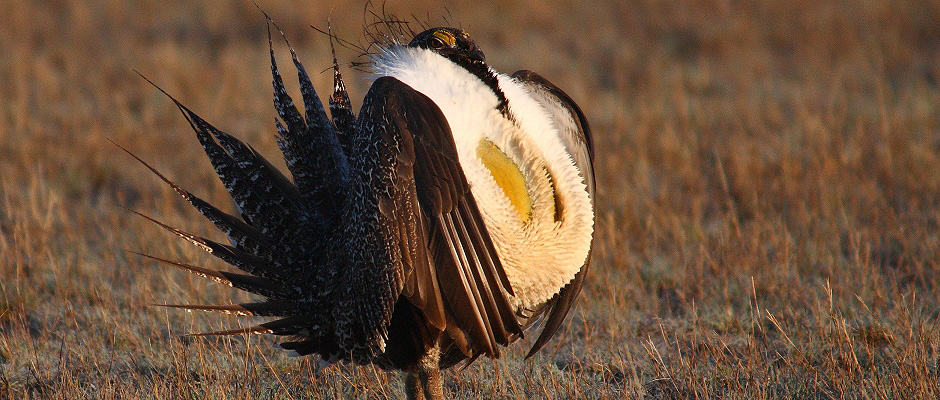Share this article
CRomnibus: Conservation Riders
The $1 trillion spending bill approved by Congress last week will keep the government running until October 2015. The “Consolidated and Further Continuing Appropriations Act, 2015” has been nicknamed the “CRomnibus” because it combines an omnibus appropriations bill for most agencies with a continuing resolution (CR) for the Department of Homeland Security.
In addition to the funding appropriations, some policy riders – legislation unrelated to the overall bill – have been attached. These riders often place additional restrictions on the use of appropriated funds by federal agencies.
A rider prevents the U.S. Fish and Wildlife Service (FWS) from writing or issuing any Endangered Species Act (ESA) listings for the greater sage-grouse (Centrocercus urophasianus), the Columbia basin distinct populations segment of greater sage-grouse, the bi-state distinct population segment of greater sage-grouse, and the Gunnison sage-grouse (Centrocercus minimus). The ESA listing of sage-grouse has been controversial because the bird’s habitat often coincides with ranching, mining, and energy development. It is uncertain if this rider simply prevents the FWS from issuing a rule or goes further by prohibiting any action by FWS that advances the decision-making process; such a restriction could delay a final decision substantially. FWS listed the Gunnison sage-grouse as threatened under ESA in November; it is unknown how this rider will impact that previous decision.
A provision on preventing funding for the regulation of lead (Pb) ammunition and fishing tackle under the Toxic Substances Control Act was also included in the appropriations bill. The U.S. banned lead ammunition in the hunting of waterfowl and coots in 1991, but there are no federal regulations on hunting or fishing other wildlife with lead tools. This rider prevents the Environmental Protection Agency from issuing new regulations on lead, upsetting some environmentalists who are concerned about the impacts lead has on wildlife. The Wildlife Society has a Position Statement and a Fact Sheet that address the impacts of lead (Pb) on wildlife.
Although the riders only limit agency actions for one year, some are worried that some of the riders may be carried over into future appropriations bills. Appropriators tend to use the previous year’s bill as a basis for drafting new legislation, allowing policy riders to stay relevant.
Sources: Greenwire (December 10, 2014),
Header Image: Image Credit: Steve Fairbairn, USFWS








